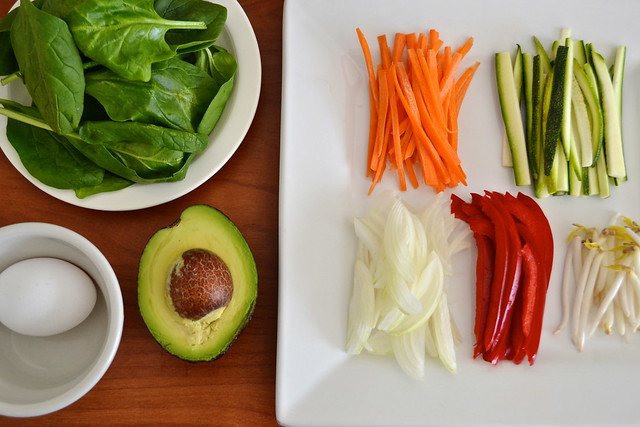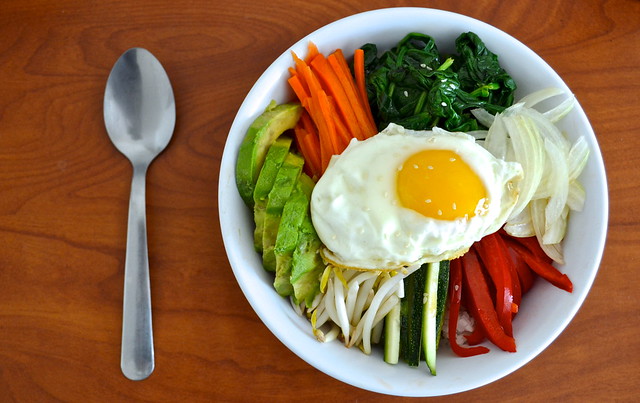Bibimbap, aside from being wonderfully alliterative, is a medley of rice and almost anything else. Meaning “mixed rice” in Korean, bibimbap has become one of the nation’s most conspicuous and popular dishes, due to its simplicity and convenience. Bibimbap can come in a variety of colorful forms. Because you can’t eat out every night, here is a simplified version you can make in a college kitchen.
1. Choose your base
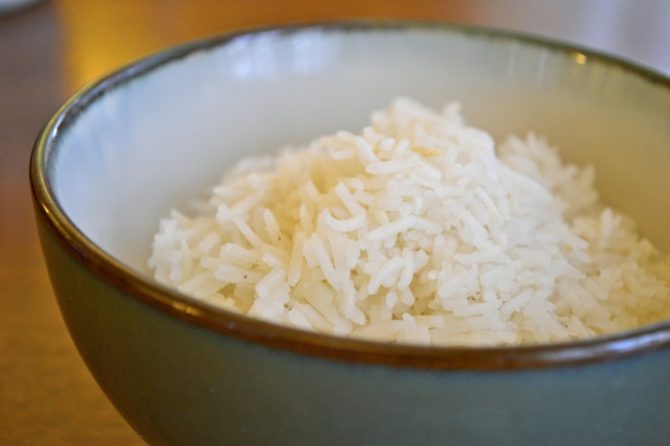
Photo by Kelda Baljon
Prepare a serving of your favorite type of rice. Most bibimbaps feature short grain or sushi rice, but any rice of your choice will do.
2. Choose your filling
While you’ll find more traditional vegetables like bean sprouts and spinach nestled in the majority of bibimbap bowls, the dish is known for its customizability. Pictured above is a completely vegetarian arrangement, but we encourage you to throw in your favorite chopped or shredded proteins in addition to your favorite vegetables.
3. Prepare your fillings
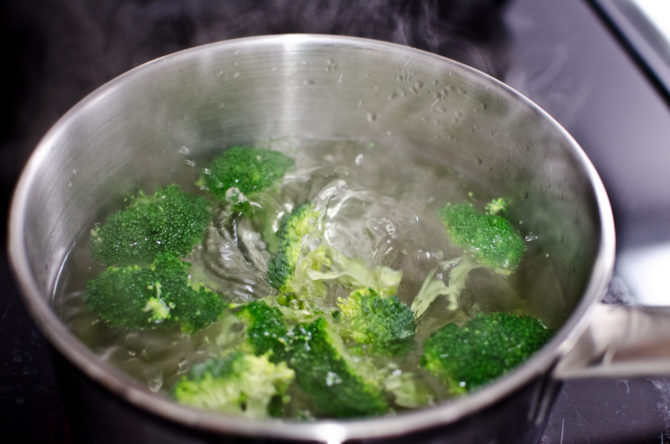
Photo by Kai Huang
Blanch and shock your vegetables separately. If you’re feeling fancy, you can season and pickle them ahead of time with a little bit of soy, acid of your choice, and sweetener of choice. While it may be slightly time consuming, blanching them in fresh pots helps with color retention for that impressive Instagram photo. If you prefer raw vegetables, we recommend slicing everything a bit more thinly.
4. Choose your toppings
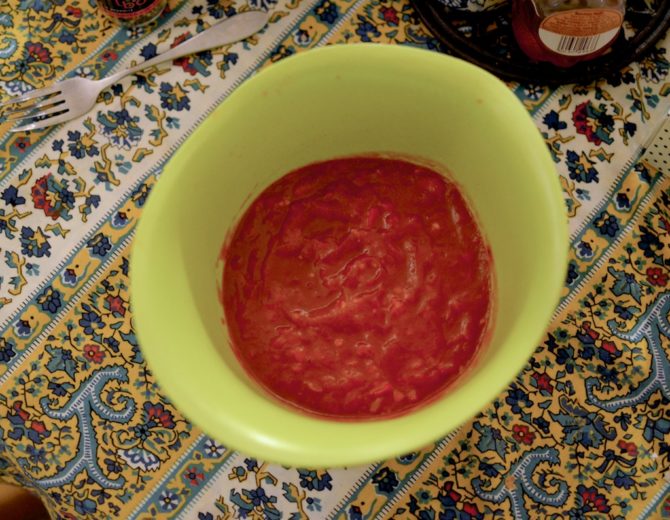
Photo by Margaret Weinberg
Sesame oil and seeds are nutty and almost necessary additions to every steaming bowl of mixed rice. For those who can take the heat, gochujang is a Korean fermented red pepper paste and is a classic pairing with bibimbap.
While you may be tempted to use sriracha as a hot sauce substitute, gochujang possesses a lovely pungent quality that provides anther dimension of flavor that sriracha does not. Prior to eating, spoon a tablespoon or so of this delicious pepper paste into your bowl and vigorously mix.
5. Arrange and eat
Artfully arrange your toppings on top of the bed of rice, and top with a fried egg and enjoy!


